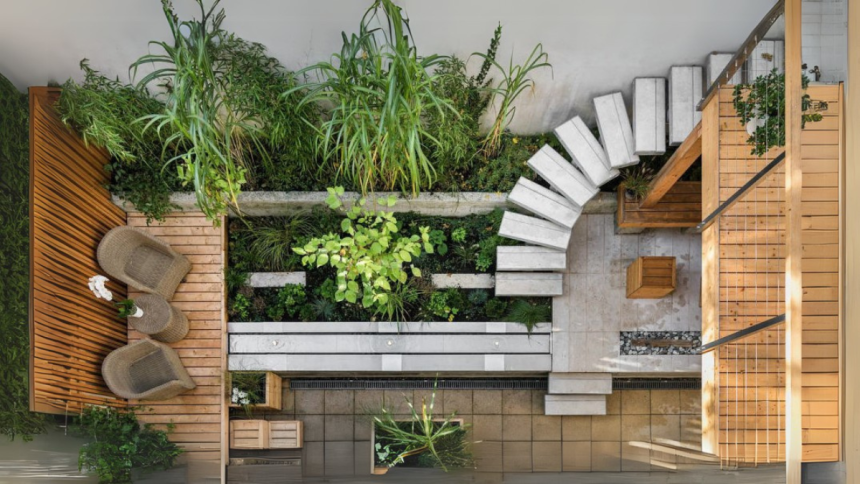When it comes to large commercial projects, especially in the construction phase of building complexes, every detail matters. Landscaping is often the final touch that ties the entire development together, but it’s far from a simple task. From hydraulic calculations to detailed reporting, the complexities of modern landscape design require tools that go beyond pen and paper. Enter landscape design software—a game-changer for professionals working on expansive projects. Visit https://www.softwarerepublic.com/ for more information!
Why Landscape Design Software is Essential
Think about a sprawling commercial project, like a corporate campus or a luxury apartment complex. These spaces demand precision and efficiency. Traditional methods of planning can quickly become cumbersome when faced with factors like irrigation needs, plant selection, and pipe sizing. That’s where landscape design software shines, offering a blend of functionality and creativity that makes the process smoother and more effective.
It’s not just about creating visually stunning spaces (though that’s certainly part of it). It’s about ensuring that every element works together seamlessly, from efficient water usage to proper plant placement. The best software doesn’t just help design; it ensures success during implementation and long after.
Features That Make All the Difference
Modern landscape design software is packed with features that cater to the unique needs of commercial projects. Here’s a closer look at some of the most impactful:
- Hydraulic Calculations: Proper irrigation is a cornerstone of any large-scale project. These tools handle complex hydraulic calculations to determine flow rates, pressure requirements, and optimal pipe layouts. The result? An irrigation system that’s both efficient and reliable.
- Detailed Reporting: Stakeholders in commercial projects need transparency and data. Software-generated reports provide detailed insights into water usage, costs, and system performance, ensuring everyone stays informed.
- Extensive Plant Database: Choosing the right plants for a project involves more than aesthetics. Factors like climate compatibility, water requirements, and maintenance needs come into play. A robust plant database makes selection easy and accurate.
- Automatic Pipe Sizing: For large irrigation systems, sizing pipes manually is a daunting task. Software automates this process, saving time and reducing errors.
- Easy Drafting Tools: From importing site images to creating detailed 2D and 3D renderings, these tools make drafting faster and more precise. Visualizing the design before construction begins reduces misunderstandings and improves client satisfaction.
- Import and Overlay Capabilities: When working on commercial projects, integrating site plans, building layouts, and other essential documents is critical. The ability to import and overlay these elements streamlines the planning process.
The Role of Landscape Design Software in Commercial Projects
Commercial landscaping is about more than just aesthetics. It’s a key component of a project’s functionality and sustainability. For instance, the design must address drainage to prevent water pooling or flooding while ensuring irrigation systems deliver water efficiently without waste.
Large-scale projects also come with tight deadlines and budgets. Landscape design software helps keep things on track by automating repetitive tasks and providing accurate estimates. This not only saves time but also minimizes costly mistakes during the construction phase.
Practical Benefits for Construction-Phase Projects
During the construction phase, coordination is critical. Landscape design software bridges the gap between planning and execution by providing clear, actionable plans. Here are some ways it proves invaluable:
- Seamless Communication: Detailed plans and reports make it easier to communicate with contractors, architects, and other stakeholders. Everyone knows what’s expected, reducing the risk of errors.
- Efficient Resource Management: With automated calculations and plant databases, resources like water and materials can be allocated more effectively, avoiding waste.
- Improved Client Confidence: Visual representations of the project—especially 3D models—help clients understand the design and feel confident in the outcome. It’s much easier to secure approvals when the vision is clear.
Choosing the Right Software for the Job
Not all landscape design software is created equal. For commercial projects, it’s important to select a platform that’s robust enough to handle the scale and complexity of the work. Look for features like integration with CAD tools, compatibility with industry standards, and a user-friendly interface.
Some popular choices in the industry include:
- Land F/X: Known for its irrigation and planting tools, it’s ideal for large-scale projects.
- Vectorworks Landmark: A versatile option with advanced drafting and design capabilities.
- AutoCAD: While not solely focused on landscaping, its compatibility with specialized plugins makes it a strong contender.
The Future of Landscaping with Advanced Tools
As technology evolves, so does the potential of landscape design software. AI-driven recommendations, augmented reality previews, and cloud-based collaboration are just a few of the advancements on the horizon. These innovations promise to make large-scale landscaping projects even more efficient and exciting.
For example, imagine a tool that not only calculates hydraulic needs but also predicts future water usage based on climate data. Or software that allows clients to virtually “walk through” their completed landscape before construction even begins. The possibilities are endless.
Final Thoughts
In commercial landscaping, precision, efficiency, and collaboration are non-negotiable. Landscape design software offers the tools needed to meet these demands, ensuring that every project is a success from start to finish. From hydraulic calculations to detailed reporting, these platforms take the guesswork out of complex tasks, allowing professionals to focus on what they do best—creating stunning, functional landscapes that stand the test of time.
For anyone involved in large-scale projects, investing in the right software isn’t just a smart choice—it’s an essential one.
Lynn Martelli is an editor at Readability. She received her MFA in Creative Writing from Antioch University and has worked as an editor for over 10 years. Lynn has edited a wide variety of books, including fiction, non-fiction, memoirs, and more. In her free time, Lynn enjoys reading, writing, and spending time with her family and friends.















